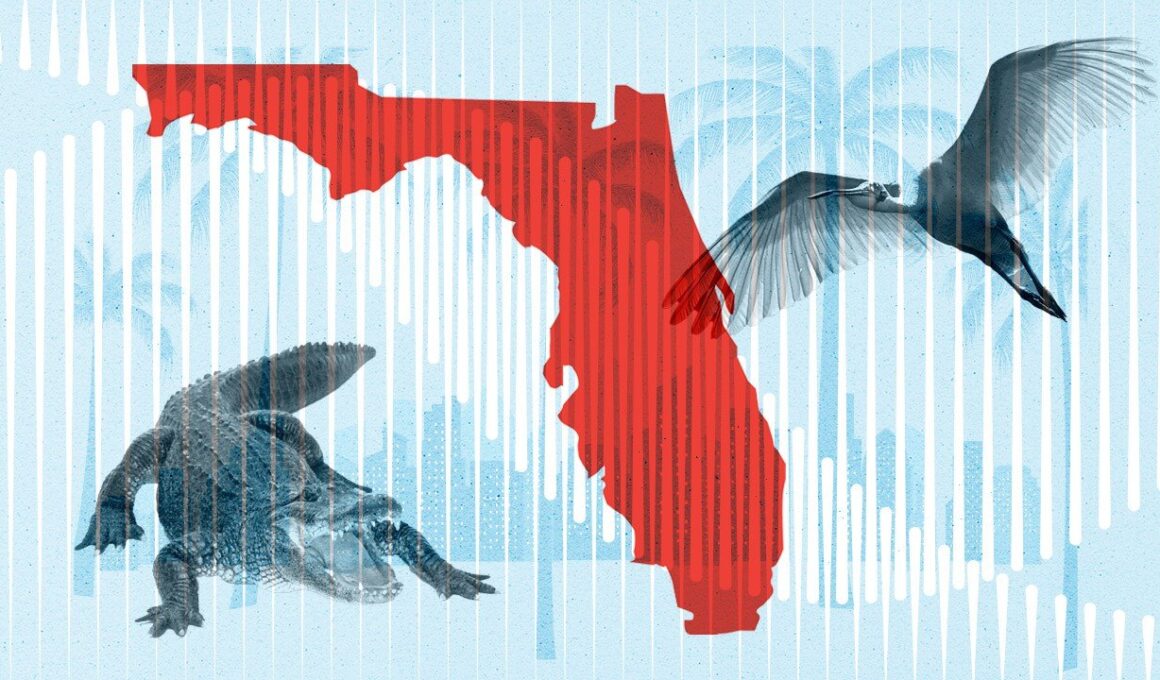Florida’s housing market is a tale of two states. On the coast, condo prices are falling with residents being driven out by high insurance costs and assessment fees, while inland, the cost of single-family homes is holding steady.
Local experts say this divergence is driven by soaring insurance premiums and rising assessment fees under new state regulations, which have significantly affected condo owners.
“I am feeling a major slowdown in the market,” says Realtor.com® senior economist Joel Berner. “I feel like it’s a buyer’s market right now, unless the house is perfect and perfectly priced.”
After years of demand and robust equity gains, Florida’s housing market is changing—but it might not be on a downturn. Realtor.com has analyzed the data to provide insights into the current state of Florida’s housing market.

(Getty Images)
Why the fuss over Florida?
Florida is the biggest housing market in the country, with the most homes for sale. Despite California having almost twice as many residents, Florida has nearly double the number of home listings in any given year, accounting for about 1 out of every 8 listings in the U.S.
“Florida remains a bellwether state,” Jenny Lenz, the managing director of Dolly Lenz Real Estate in Naples, FL, says of the state’s reputation. “Consistently attracting people from around the globe due to its significant tax advantages, perfect weather, and booming economy.”
Housing stock has been on a tear in Florida since early 2022, and especially over the past year. In recent months, the number of homes for sale is up 50% compared with the same time in 2023, and that's after inventory rose by around 30% the year before. Instead of a winter dip in homes hitting the market this past year, they just kept piling up.
This means, in 2024, Florida listings made up about 1 out of every 5 in the U.S.
That surge in listings has led to falling home prices, especially in some Southern Florida markets.
More than one market
Florida is a large and diverse state, and that's certainly reflected in its various housing markets.
The main distinction: Single-family homes—which are mostly found inland—are experiencing stable market conditions. In contrast, there's turbulence in the state’s vast condominium market, with inventory surges and a concentration of price reductions.
The reason for the divergence, according to local experts, is two-fold.
First, rising insurance premiums in Florida are squeezing the condo segment, according to Lindsey Johnson, a Realtor® with Keller Williams in Gainesville.
“Insurance is a massive factor right now in the state of Florida, especially for some of those southern lower coastal areas," Johnson says. "The insurance rates are going up a lot.”
Recent studies found Florida to be among the most expensive states for home insurance, with more rising premium costs expected.
But just as important is the continuing fallout from the deadly collapse of Miami's Surfside condominium building in June 2021, says Jennifer Levin, a Realtor with Compass in Fort Lauderdale.
In the wake of the disaster, which killed 98 people, new state laws have been put in place to attempt to prevent the same thing from happening again. But the measures come with steep costs to cover additional inspections and new condo-owner association reserve fund requirements.
“The big pullback in the market is in the condo market because of the rising insurance costs and new laws that require buildings to have full reserves by next year,” Levin explains. “Prices are pulling back, because nobody can afford the association fees anymore.”

(David Santiago/Miami Herald/Tribune News Service via Getty Images)
Some condo owners, Levin says, are facing assessments that can add up to more than $100,000, in the case that a condo building needs newly required maintenance and additional reserve funds.
It's a combination of conditions that's sapping value from the condo market, local real estate experts agree.
Condo prices are down around 12% since the peak of demand in 2022, while single-family homes are roughly even compared with the same time. In fact, there's been a year-over-year decline in condo prices, but single-family home prices are now on the upswing—even if they're not seeing the kinds of COVID-19 pandemic-driven increases like they did in 2020 and 2021.
The same divergent trends appear when separating coastal areas from noncoastal areas. In Florida ZIP codes that touch the coast, list prices are down year over year, by 1.3% on average. In noncoastal ZIP codes, prices are up 2% on average.
And for properties with a “beach” designation in the listing, the time spent on the market has been growing faster than for single-family homes. Whereas “beach” listings and “non-beach” listings were selling in almost the same amount of time during the peak of the pandemic demand surge, now properties near the beach take about eight days longer to sell—and that gap has been widening.
Experts say sellers of these kinds of homes need to adjust their strategies.
“A lot of sellers are still unrealistic. They’re still living in 2022, and they just can’t get over it,” Berner says. “If a house is on the market for six months, that says that the seller's expectation is unreasonable.”
Southern stagnation, northern growth
There's also a meaningful difference between the southern and northern ends of this peninsula. In general, the upper half of the state is more affordable, leading to persistent demand and stabilized prices. And South Floridians have caught on.
"There’s a migration from Dade and Broward County to Palm Beach County," Levin says.
Amy Simmonds, a Realtor and the principal of The Simmonds Team Compass in Palm Beach, sees it plainly, too. Folks are moving north, she says, trading pricey, big cities for smaller, cheaper communities.
"They’re cashing out in Miami and buying a brand-new, adorable little house in Port St. Lucie for $600,000," she says.
Florida's fate
“We continue to see strong sales and high demand for quality products in prime locations,” Lenz says, characterizing the current state of Florida's market as a “shift toward a more balanced and healthier average.”
But what happens next will depend largely on mortgage rates, which are expected to drop later this year. If and when that happens, experts predict Florida's housing market will send fewer mixed signals.
"If interest rates magically plummeted tomorrow," Johnson says, "this market would take off again."








